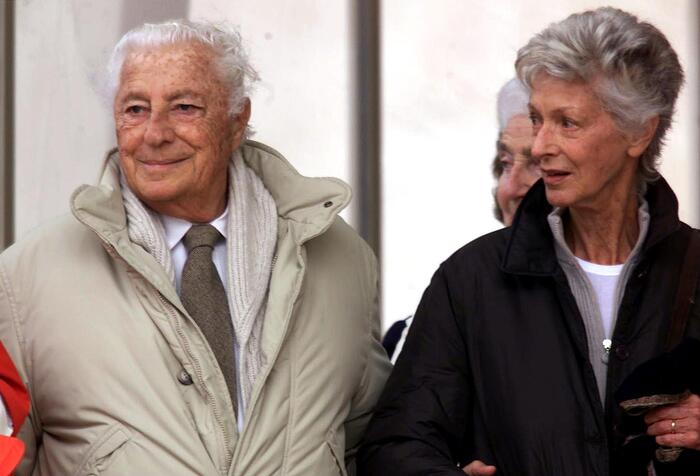Horacio Oliveira was always searching constantly through the streets of Paris, although Ossip Gregorovius assured him: "You have the feeling that you already have what you are looking for in your pocket." As any good reader understands, Paris could well be the whole world and Horacio Oliveira, a know-it-all guy who "used axes like other penicillins", could well be more than just the character in a novel to become the search engine for an infinite book.
“Infinite book” was one of the multiple definitions that Julio Cortázar gave Rayuela , an “antinovela”, later called “contranovela” and later cataloged with a whole host of terms to speak of a kind of “summary of many wishes, of a lot of notions, a lot of hopes and also, why not, a lot of failures ”. But summarizing the constant search has a peculiarity, only available to brilliant minds: the synthesis seems to never end. Like Horacio Oliveira, or rather, like Cortázar, John Coltrane was always in constant search. And, like Hopscotch , his work A Love Supreme never runs out. Coltrane is one of the many jazz musicians cited in Hopscotch, perhaps a small wink, but that can explain Cortázar's claim to pay tribute to the innate desire to transcend that the creator of A Love Supreme had.
Published in 1965, A Love Supreme , beyond being considered a jazz masterpiece, is a revelation. Coltrane concentrates all his mysticism on this album as if he could somehow communicate with God, or whatever it is that is silent when life is all noise. The saxophonist was a profoundly mystical being after having fallen into hell. As he himself said, he had a "spiritual awakening" in 1957 after a long struggle with alcohol and heroin, which led to his expulsion from the Miles Davis group. The awakening would end up permeating all his work with a unique spirituality. A Love Supreme is the great result of that search.
At the height of his career, Coltrane disappeared for a time to compose A Love Supreme . Married and waiting for his third child, the musician was in the happiest period of his life when he decided that he wanted to create a suite that reflected his gratitude to God. It was a bit fuzzy, a whirlwind of ideas, but powerful enough that, like a druid looking for a potion, he isolated himself above the garage of his home in Dix Hills on Long Island. So much so that his wife claimed that she had "a missing husband." You could hardly see him around the house. Only rarely did he go downstairs, grab some food, and lock himself in the garage again. It was not a matter of hours of confinement, but of whole days. His family came to disagree with him for two weeks. When they found it, Coltrane, between enthusiastic and obsessive, told them that he was with something important and disappeared again. His wife ended up taking it as if the jazz genius was on a mission.
The mission was translated into a work divided into four movements, understood as a single spirit. From the sound of a gong, an oriental percussion instrument that demonstrated Coltrane's interest in less conventional sounds for jazz and collected in other of his albums, A Love Supreme opens the way to a whole search journey. The gong rumbles and the preacher, illustrated in that sax that begins to sound dramatic, sets off towards his ascension. It is a vital aspiration within a sound boil full of melodic decomposition games, where the notes and timbres enter into ecstasy and calm, depending on the moment, but always in perfect harmony with "the sheet of sound", just like the Critic Ira Gitler called for virtuosity of devilish speed and perfect execution of the Coltrane sax. A predicament of full soul and amazing balance with which its creator achieves its deepest spiritual declaration, capturing the essence of gospel in that jazz architecture, sustained by that four-string bass that dominates the entire work.
The day Coltrane left the garage with A Love Supreme composed, his wife said it was like "watching Moses come down from the mountain." For the first time, the obsessive Coltrane, always unsatisfied with the job, said he was happy with what he had achieved: “It is the first time that everything is ready. I have finished the project on paper. I know exactly what I'm going to do now in the recording studio. " What he did, in his words, was an album that was "an offering to God." "An attempt to say, 'Thank you, God.' Through our work, our hearts and our languages ”.
The greatness of this thanks is that it has a perpetual disagreement. It does not end. Like Hopscotch , A Love Supreme breaks norms in its own way of being and can be heard in more than one way. It is an experiment focused from such a unique perspective, in that direct relationship that Coltrane seeks to relate to God, that becomes endless. If you listen in a linear way it works, if you listen to its four movements indistinctly as well, but you can even hear it following the preaching sax, or the mantra that surrounds it through any of its instruments, or clinging to those three words at the end of the first movement who spectrally sing the album title, the definition of God, according to Coltrane: "A love supreme". They get nailed to the head and then one looks for how to fit or disengage them in all that fiery universe.
Before being called Hopscotch, Cortázar gave more definitions to his infinite book, that summary of the constant search for Horacio Oliveira and the world around him: atomic bomb, cry for warning, the black hole of a huge funnel ... All are also valid for define A Love Supreme, Coltrane's great prayer with which he wanted to demonstrate that his work was always unfinished, and, therefore, our passage on Earth as human beings was never resolved even if we aspired to it.


/cloudfront-eu-central-1.images.arcpublishing.com/prisa/XI7CMCSW3RH5DMG7IBW6NJDCUI.tif)

/cloudfront-eu-central-1.images.arcpublishing.com/prisa/3VLEJSDWHVBTXIQ3PJMH7AC22Y.jpg)




